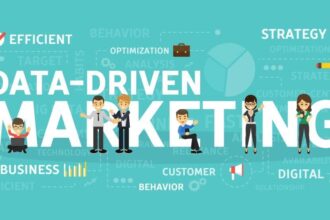Big Data has a lot of potential for true personalized one-to-one marketing. Combining different data sets to create a detailed view of your customers is a powerful tool to increase your sales and increase your conversion rates.
Big Data has a lot of potential for true personalized one-to-one marketing. Combining different data sets to create a detailed view of your customers is a powerful tool to increase your sales and increase your conversion rates. Combining customer data with social data and mobile data, the ‘Data-triangle‘ as I explained earlier, can provide you with valuable customer insights. Quite a lot of data may be easily visible and findable, but it is most of the time just the tip of the iceberg, as there are mountains of data available to create 360 degrees profiles for increased sales conversion.
Big Data and marketing is a powerful combination. With the vast amounts of data available internally, but even more externally, any organisation can reap the benefits from a customer data driven approach. Unfortunately, many organisations are not that far yet and are finding excuses not to go ahead with a customer-focused Big Data strategy. Still there are many myths in the market about the cons, but also about the pros, of Big Data. The DMA Data Council, a UK organisation that connects, enables and inspires their members to drive business growth through 1 to 1 to millions communication, has teamed with a panel of practitioners from the Email, Mobile & Connected and Social Media Councils to shatter these myths in one infographic.
These myths range from that more data means more insights, which is course not true. As I have mentioned many times already, you can also achieve great insights with small data. More data does not mean more insights, it does however can mean better insights. Another myth is the fact that Big Data is all about technology. Of course technology plays an important role with Big Data, but Big Data is also a people’s question and requires a cultural change. This is even harder to solve than the technology part of Big Data and perhaps that is why so many organisations are struggling with implementing Big Data successfully.
Separating the facts from the fiction, as the DMA attempts in this infographic, gives marketers that want to start applying Big Data a better understanding of Big Data. This is, after all, a prerequisite if you want to successfully develop and implement a Big Data strategy.
I really appreciate that you are reading my post. I am a regular blogger on the topic of Big Data and how organizations should develop a Big Data Strategy. If you wish to read more on these topics, then please click ‘Follow’ or connect with me via Twitter or Facebook.
You might also be interested in my book: Think Bigger – Developing a Successful Big Data Strategy for Your Business.
This article originally appeared on Datafloq.










